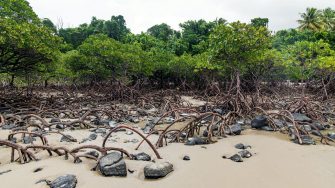UNSW researchers guiding the future of blue carbon in Australia
Following decades of on-ground engineering experience creating intertidal wetlands, UNSW Sydney’s Professor Will Glamore, Dr Valentin Heimhuber and Dr Jamie Ruprecht of the UNSW Water Research Laboratory

